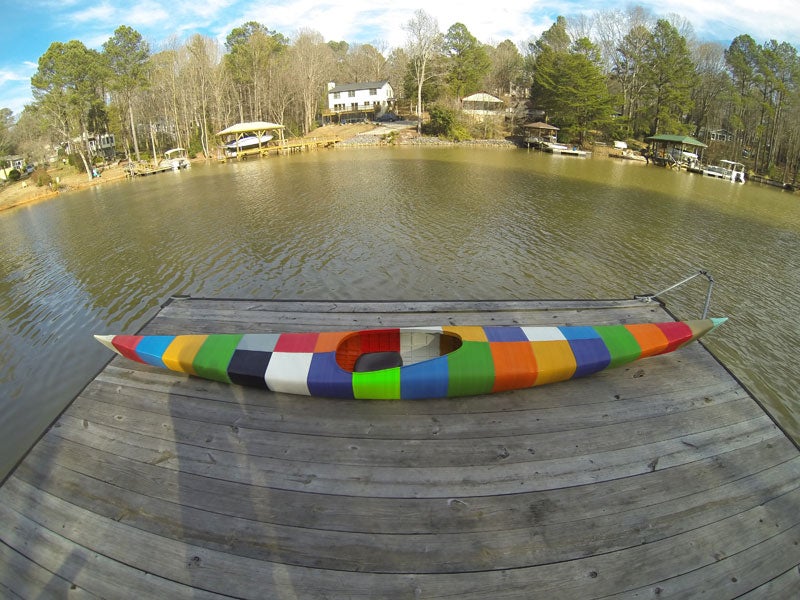World's first 3D-printed kayak is a colourful addition to a 4,000-year-old tradition
The $500 kayak took 42 days to print and, yes, it definitely floats

An engineer has created the world’s first 3D-printed kayak, fitting together 28 separately printed pieces to make a vessel that looks more like a colourful patchwork blanket than a boat.
Built by Jim Smith and showcased on his blog Grass Roots Engineering, the kayak cost just $500 to make with each piece printed from ABS plastic and fitted together with brass screws. Silicone caulk was used to seal the whole thing up and make it watertight.
Smith says that he customized the design of the kayak to fit his height and weight, and that the whole thing took 26kg of raw material and 42 days to print.
“To reduce print time and material usage, the kayak is printed at a 0.65mm layer height,” writes Smith. “It features a 6mm thick hull with a built-in, internal rib/support structure to give it strength, yet be lightweight and use less ABS plastic.”
Human beings have been making kayaks and canoes for thousands of years (quick tip: kayaks have closed tops with passengers sitting on the bottom of the hull; canoes have open tops and raised seating) with the earliest known examples hollowed out of tree trunks or made from animal skins stretched over bones.
This sort of creation isn’t the sort of thing that any amateur could create (Smith used a custom-built 3D-printer to accommodate the large pieces) but it is a fascinating example of how tradition and progress can coexist.
Subscribe to Independent Premium to bookmark this article
Want to bookmark your favourite articles and stories to read or reference later? Start your Independent Premium subscription today.

Join our commenting forum
Join thought-provoking conversations, follow other Independent readers and see their replies